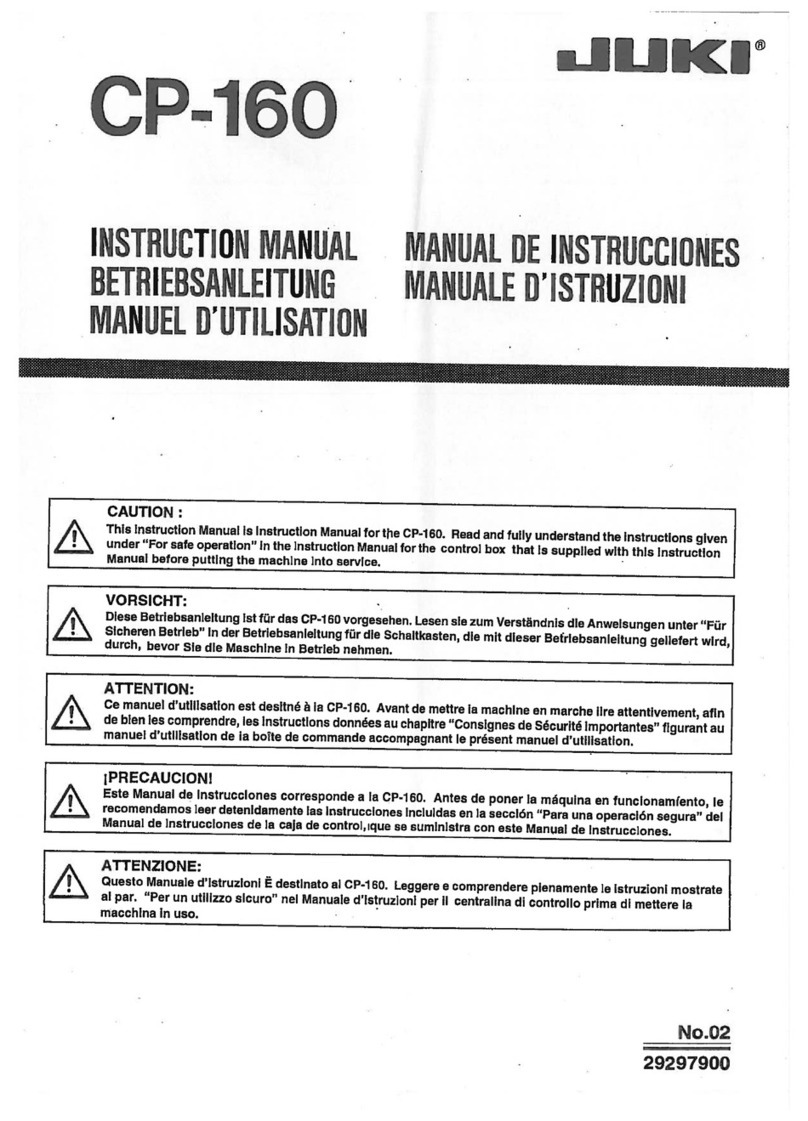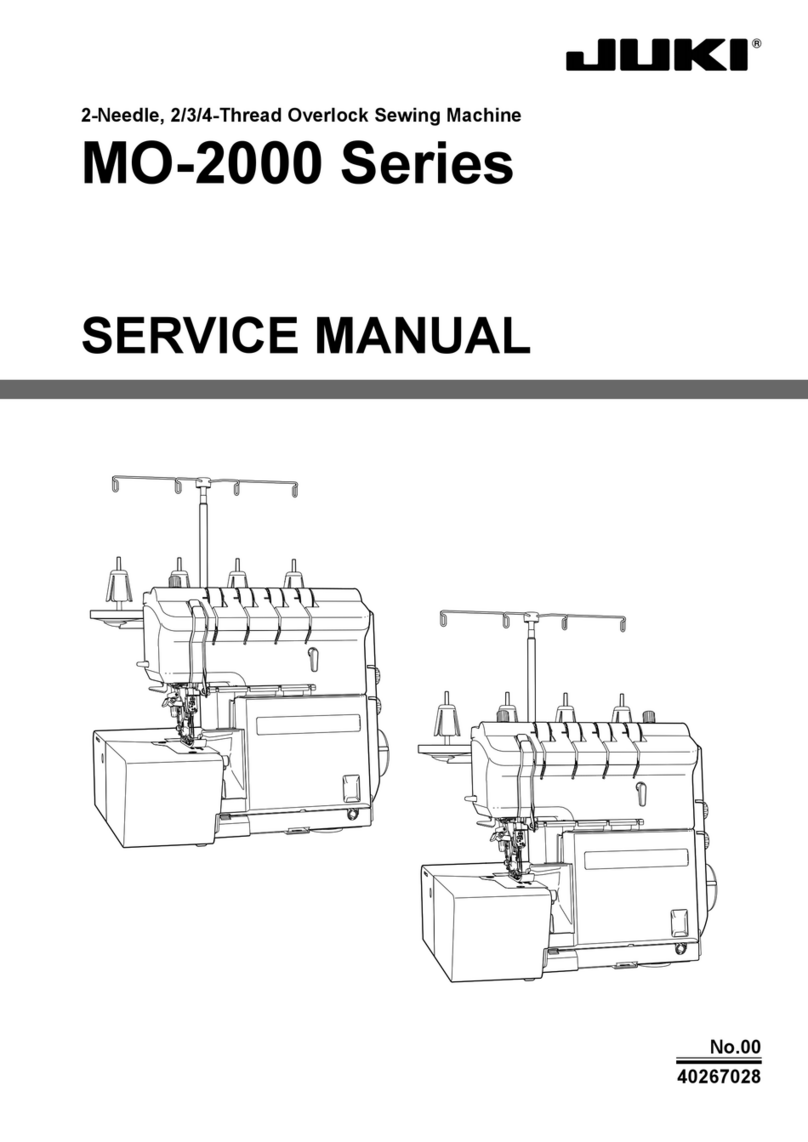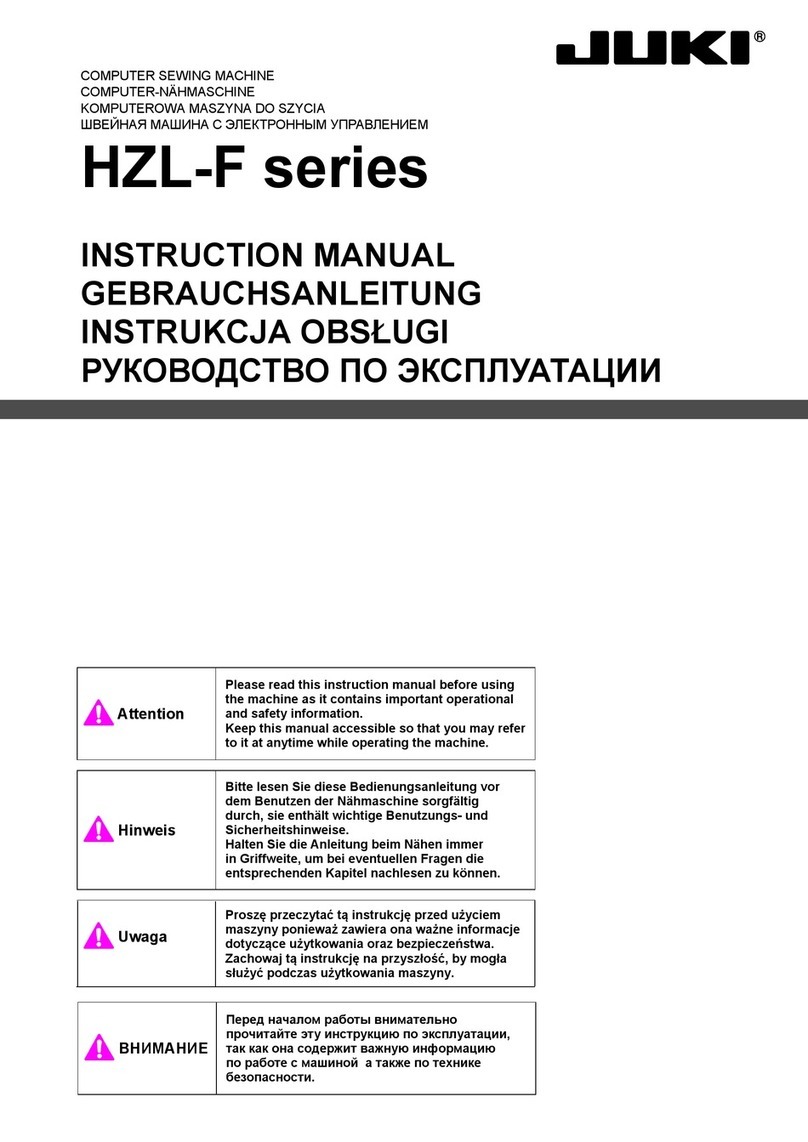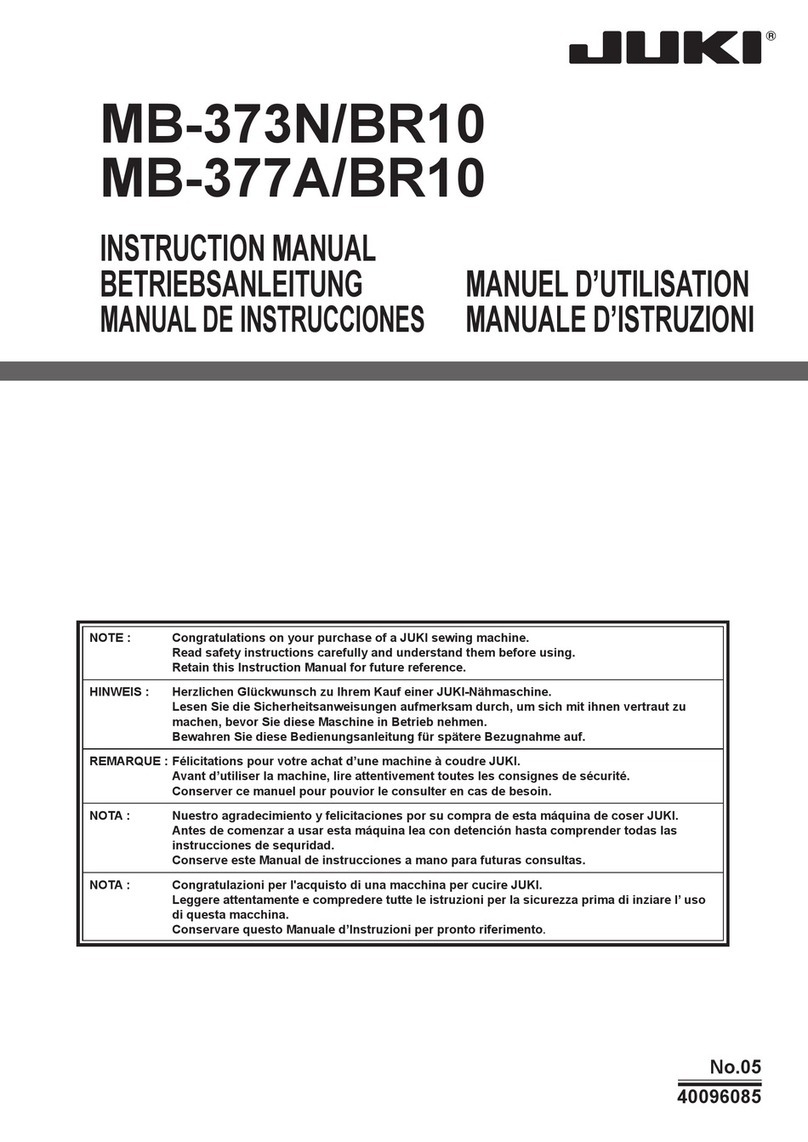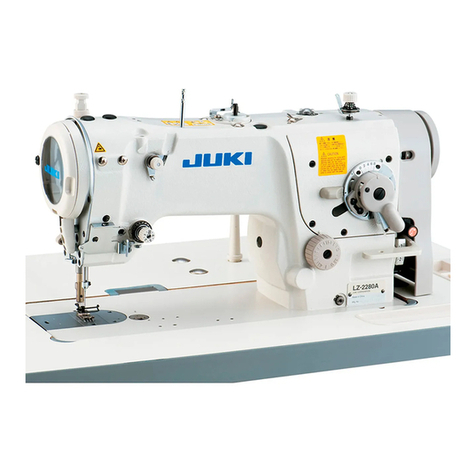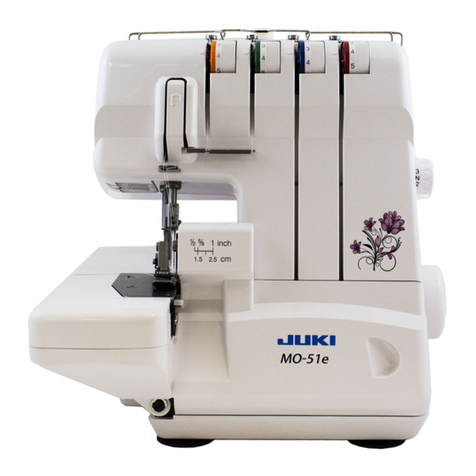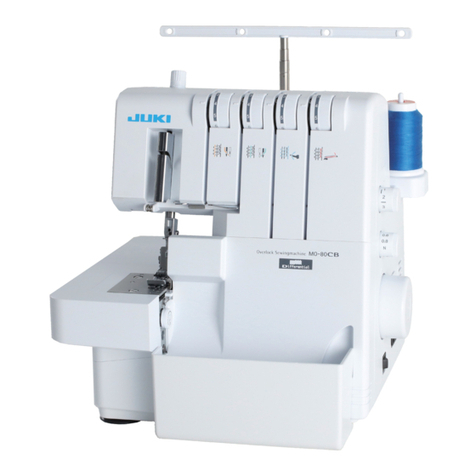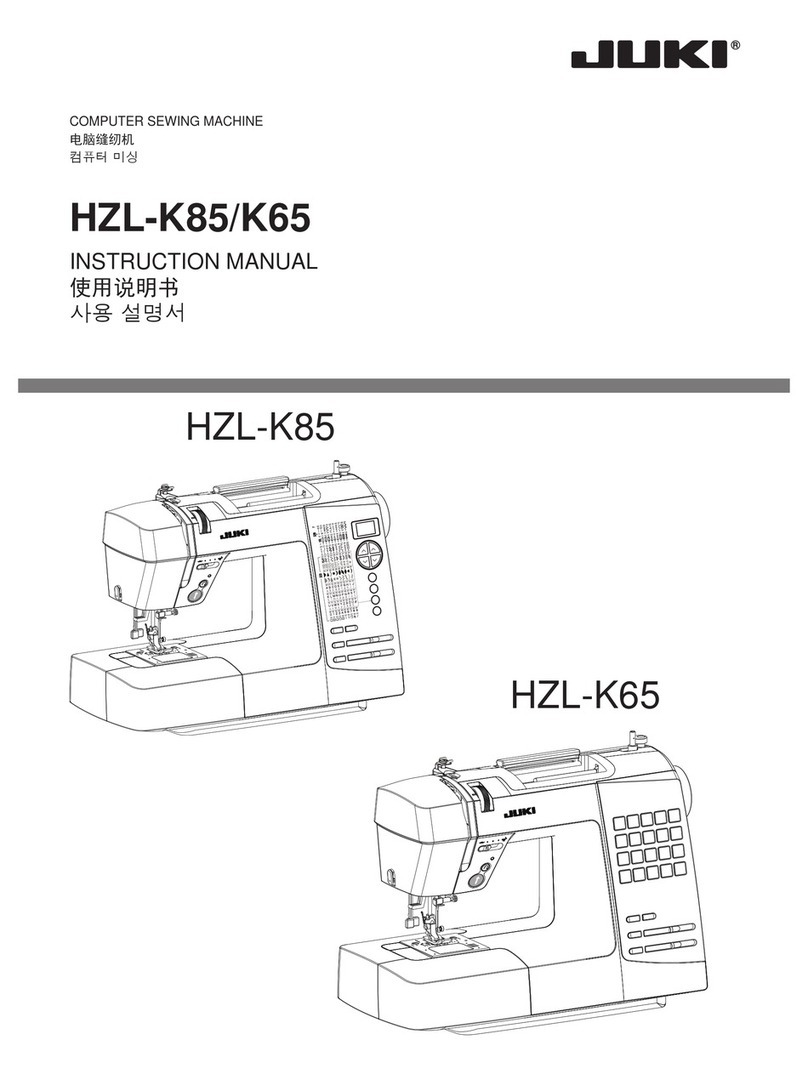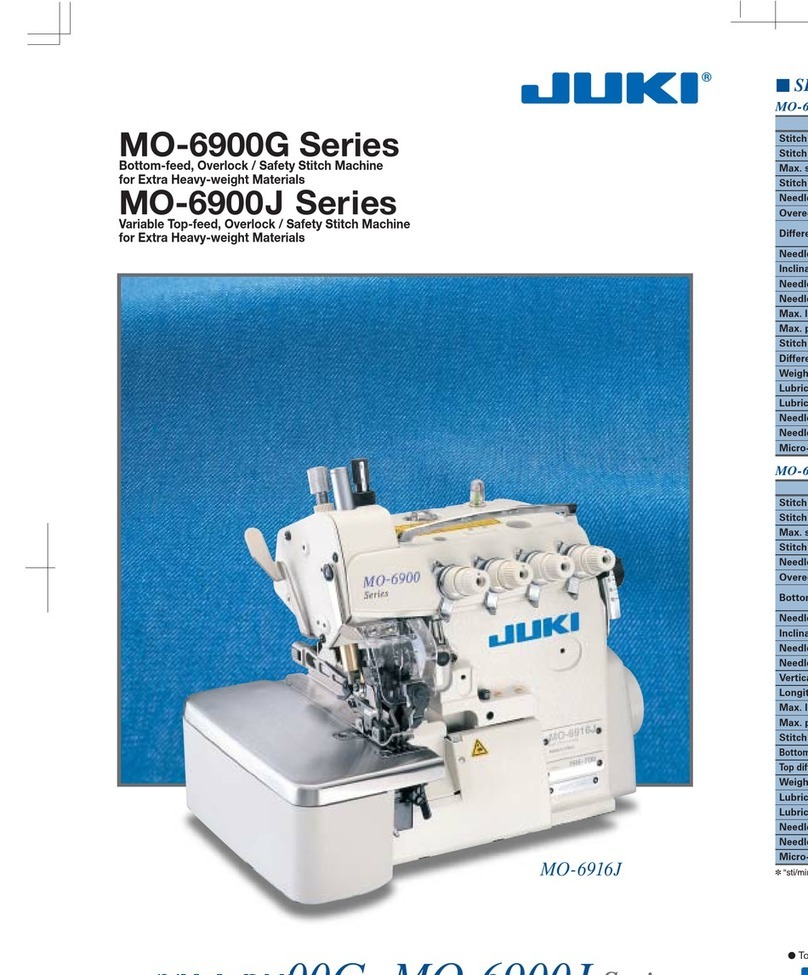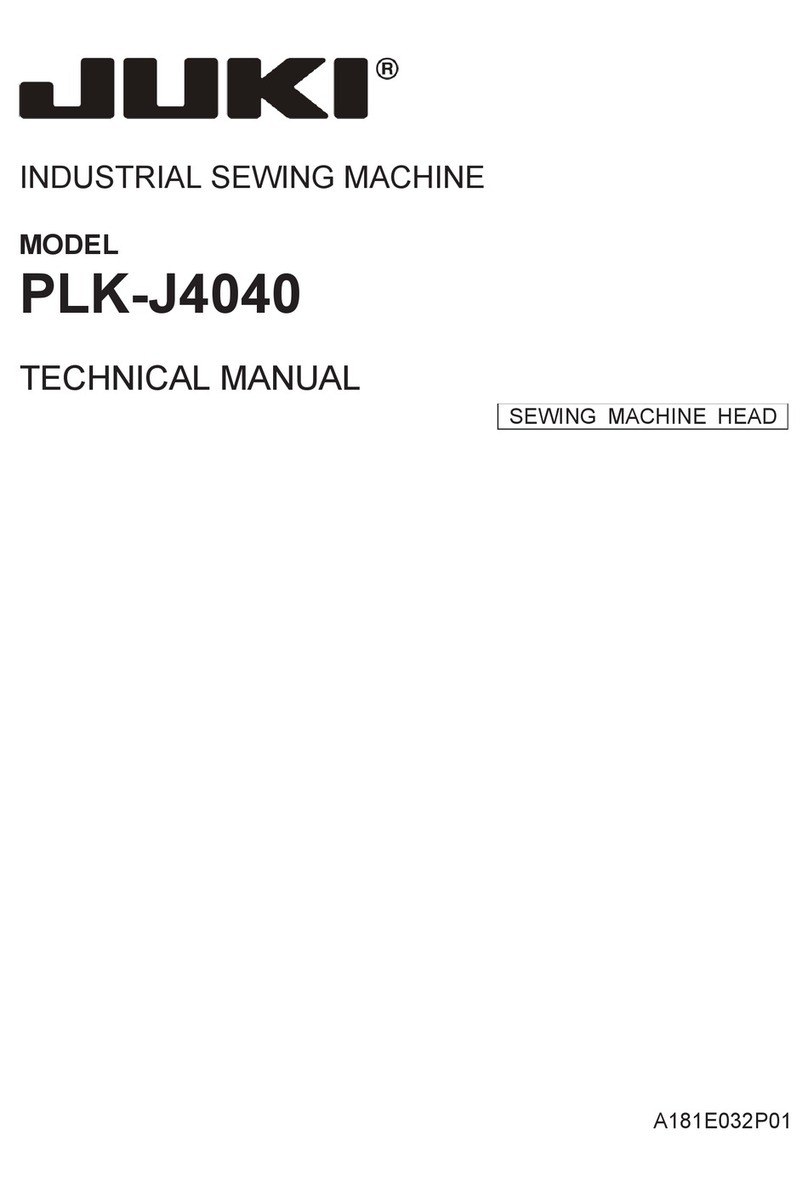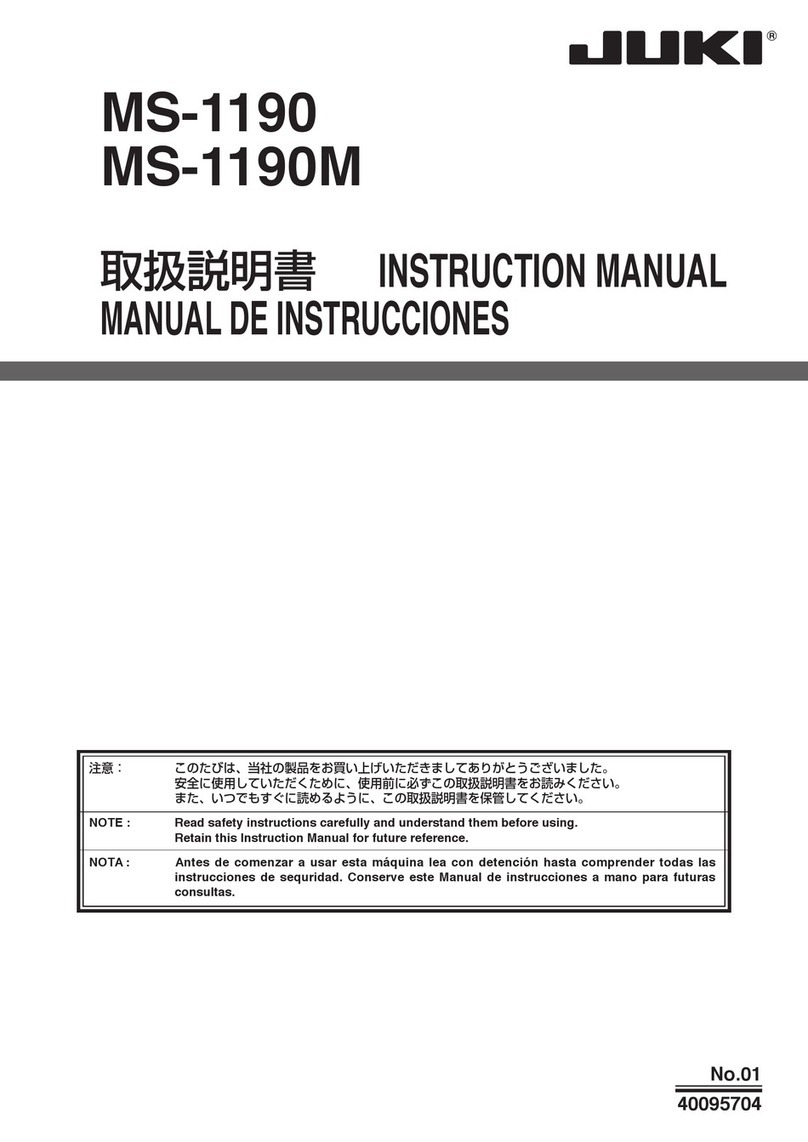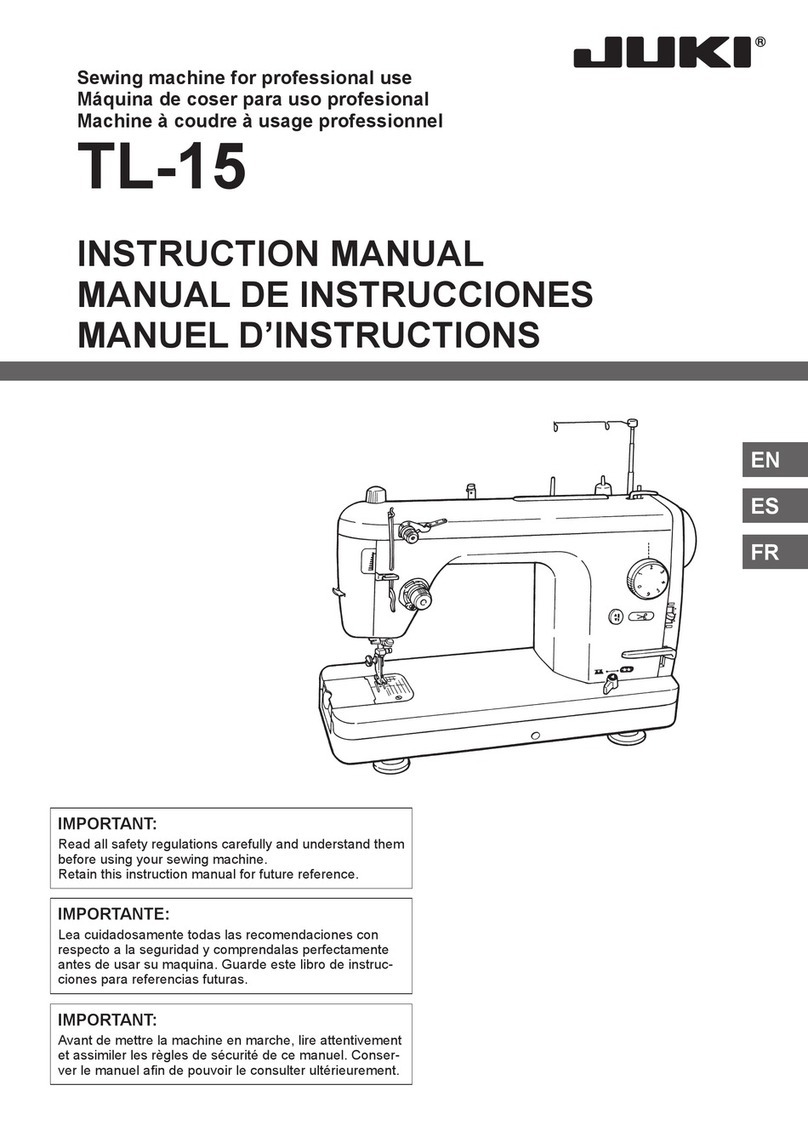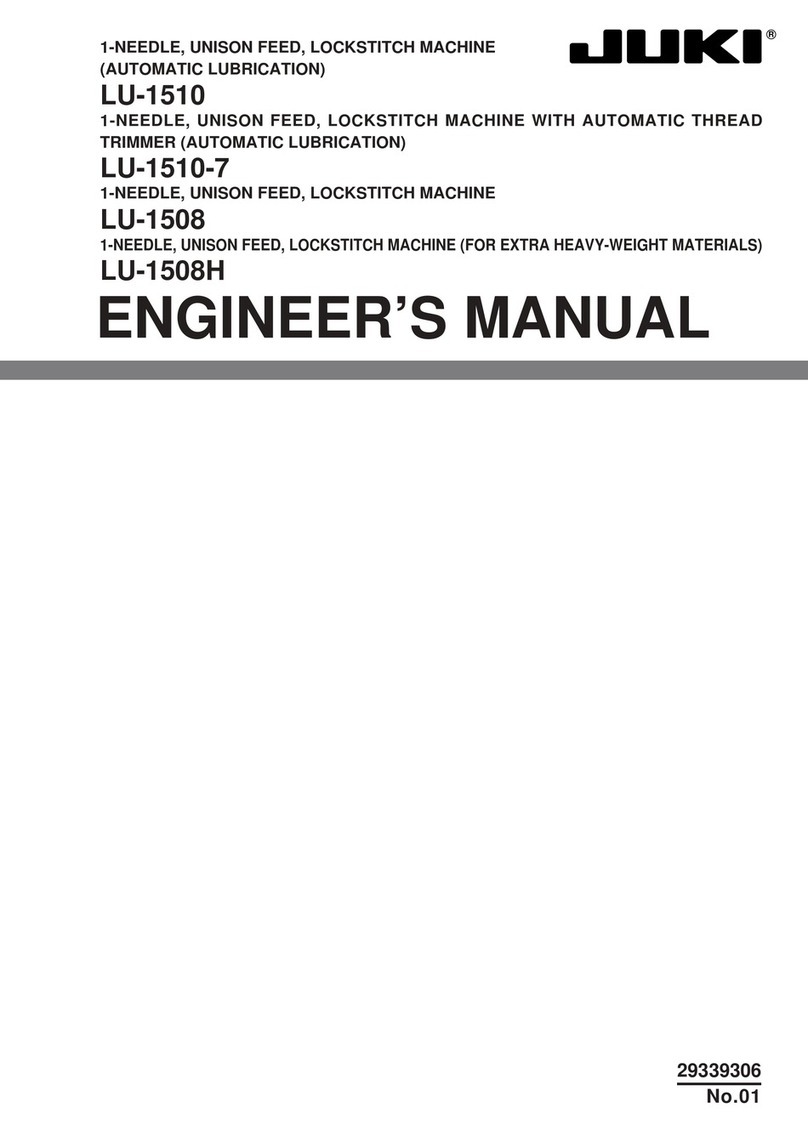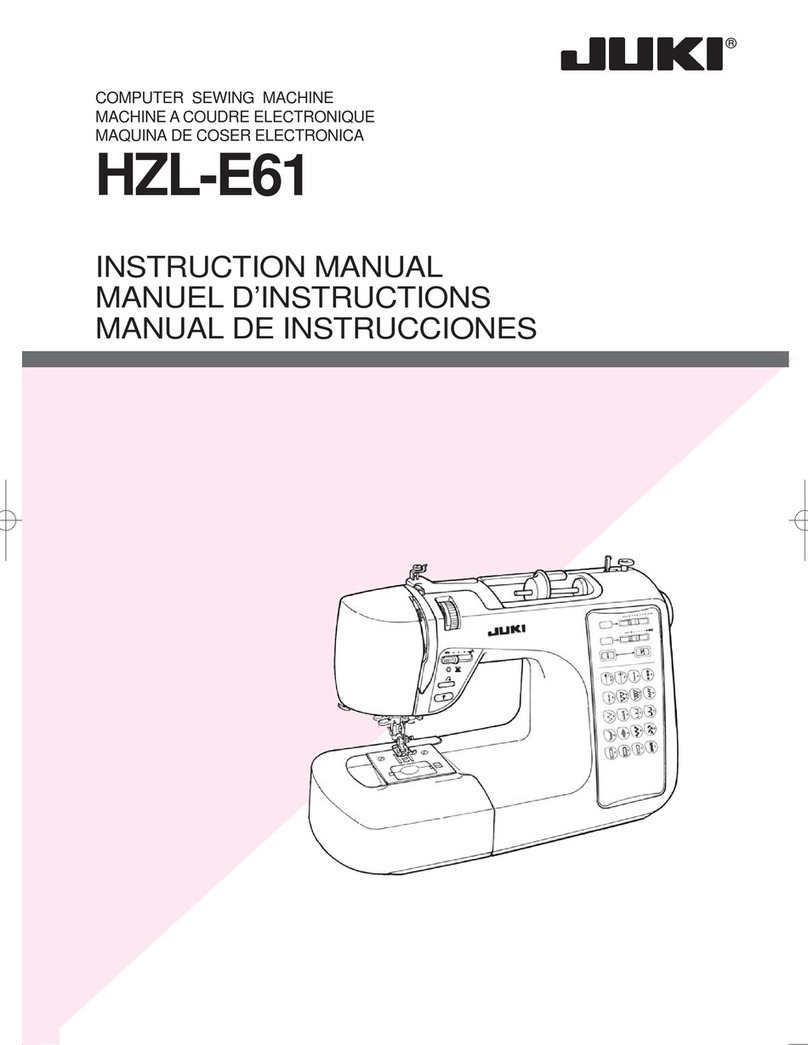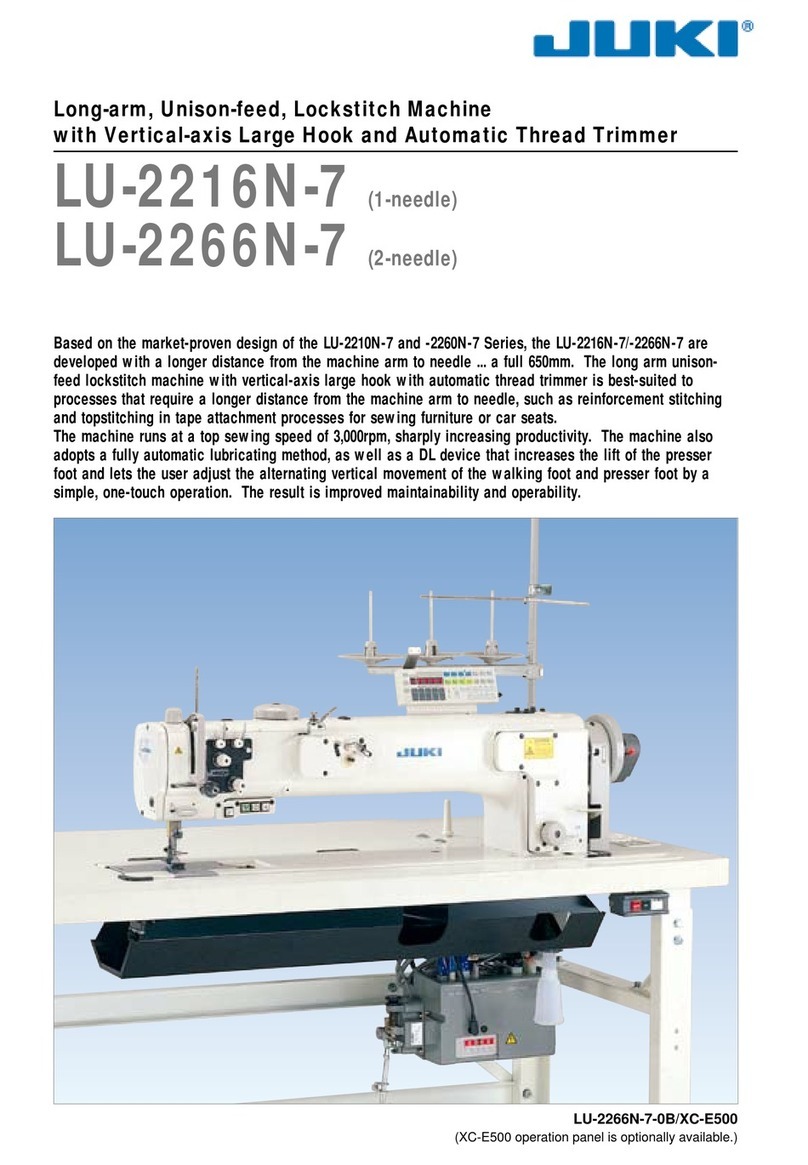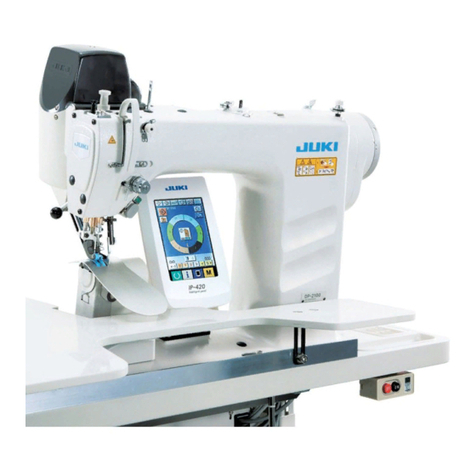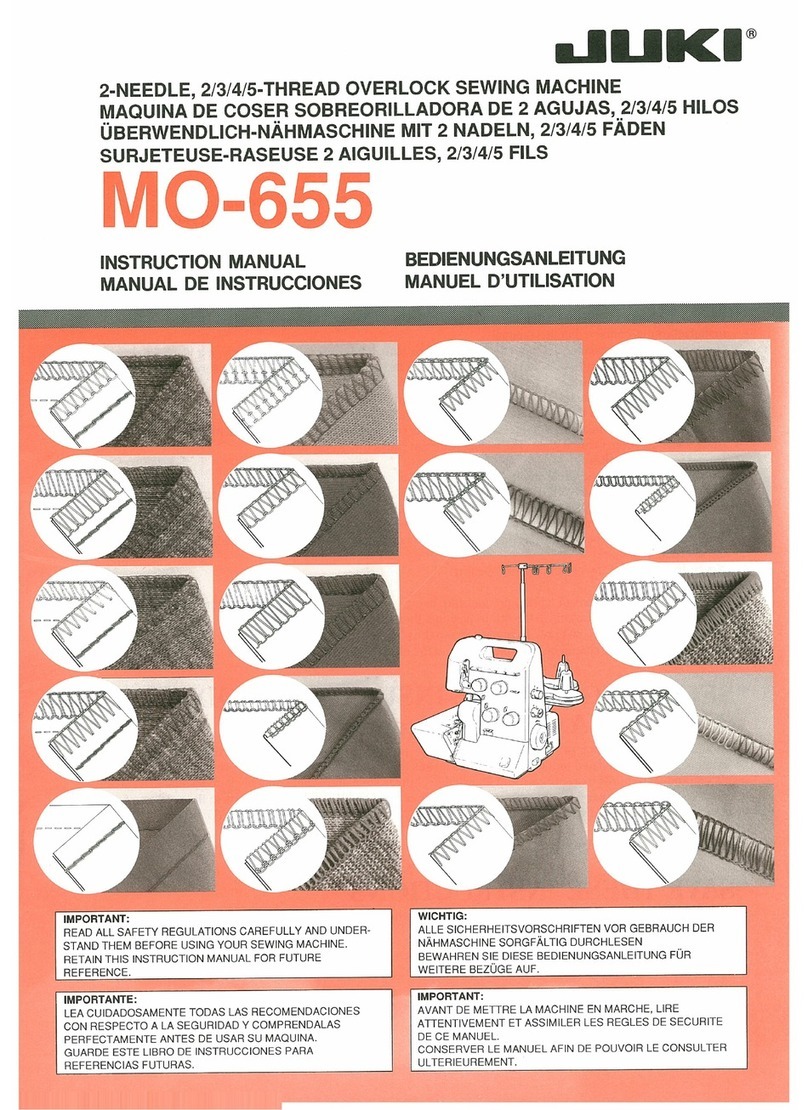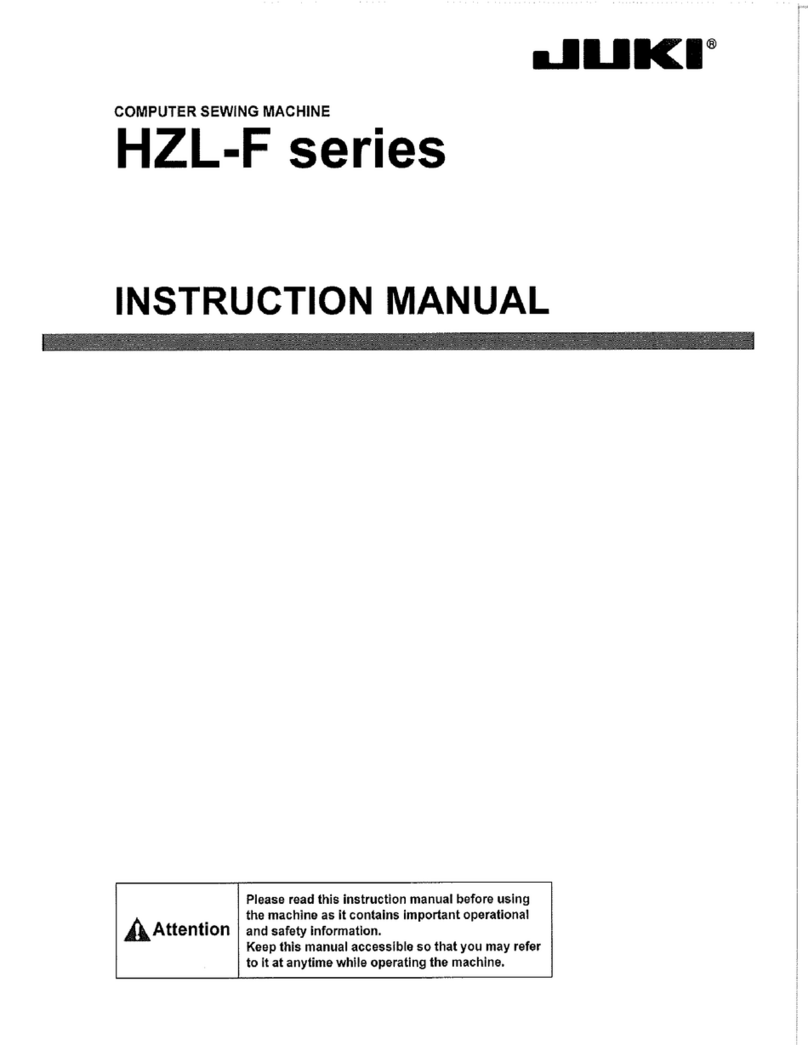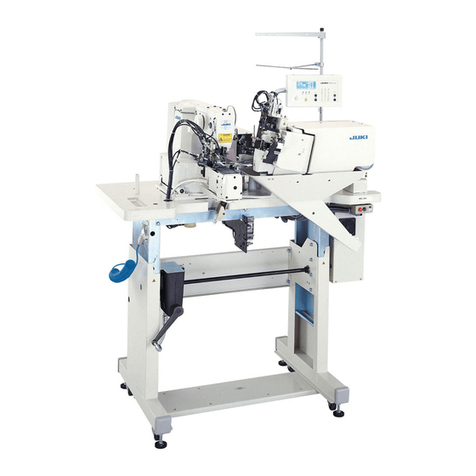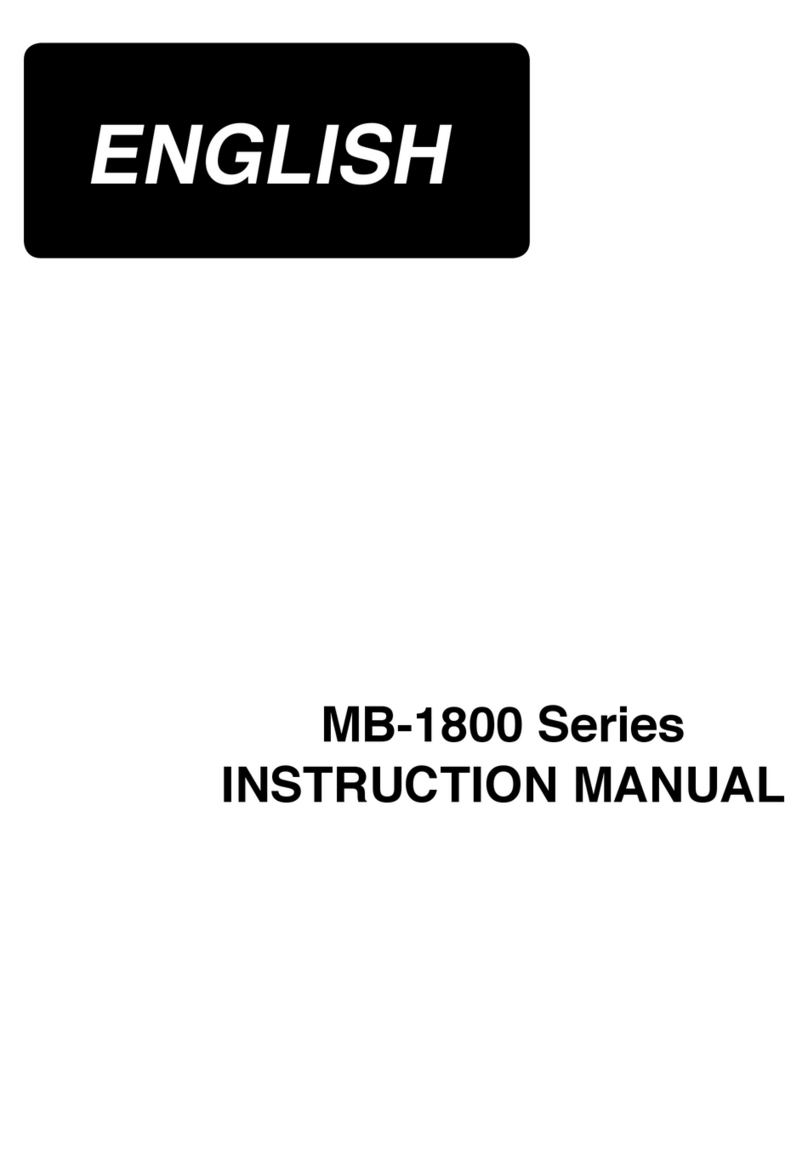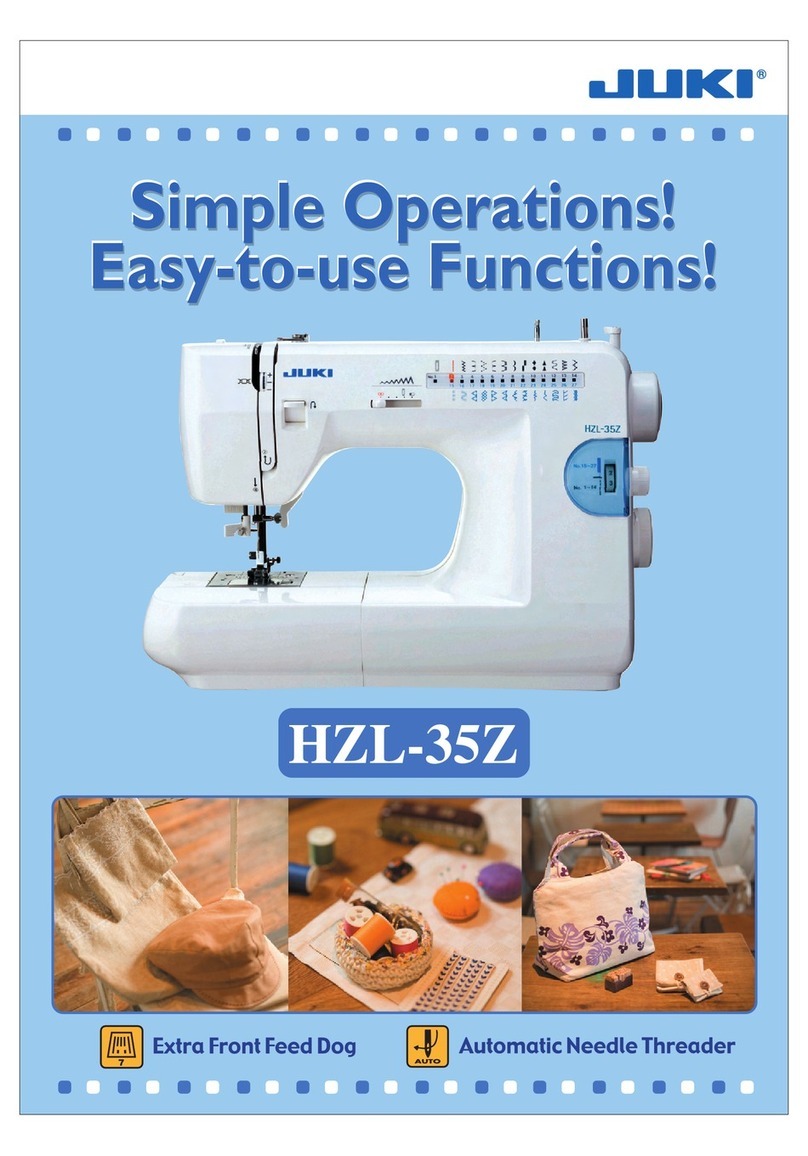
CONTENTS
1. SPECIFICATIONS............................................................................................................ 1
1-1. Specications of the sewing machine head ..................................................................... 1
1-2. Specications of the control box....................................................................................... 1
2. SETUP.............................................................................................................................. 2
2-1. Setting up the sewing machine.......................................................................................... 2
2-1-1. Adjusting the sewing machine head........................................................................................ 2
2-1-2. Changing the position of the operation panel ........................................................................3
2-2. Installing the thread stand.................................................................................................. 3
2-3. Oiling and draining of oil .................................................................................................... 4
3. PREPARATION BEFORE SEWING ................................................................................ 5
3-1. Attaching the needle ........................................................................................................... 5
3-2. Threading the machine head.............................................................................................. 6
3-3. Adjusting the thread tension.............................................................................................. 7
3-4. Adjusting the stitch length ................................................................................................. 8
3-5. Adjusting the needle guard ................................................................................................ 9
3-6. Adjusting the looper thread cam...................................................................................... 10
3-7. Adjusting the feed dog height.......................................................................................... 10
3-8. Adjusting the take-up thread tension control lever........................................................ 11
3-9. Adjusting the position of the intermediate tension release lever and needle thread
tension controller .............................................................................................................. 11
3-10. How to adjust the cloth puller .......................................................................................... 12
3-10-1. Adjusting the cloth puller belt and its longitudinal position ............................................. 12
3-10-2. Adjusting the inclination of the cloth puller belt.................................................................13
3-11. LED hand light ................................................................................................................... 13
3-12. To use the sewing machine with a cloth puller for sewing heavy-to medium-weight
materials............................................................................................................................. 14
3-12-1. Replacing the feed dog .........................................................................................................14
3-12-2. Changing the throat plate .....................................................................................................14
3-12-3. Adjusting the difference in height of the presser foot ...................................................... 15
3-12-4. Replacing the needle thread guide ......................................................................................15
3-13. Table of replaceable gauges............................................................................................. 16
3-14. Adjusting the material edge detector .............................................................................. 17
3-15. Needle cooler ..................................................................................................................... 18
3-15-1. Adjusting the position of the blow pipe............................................................................... 18
3-15-2. Adjusting the air ow.............................................................................................................18
3-16. Chain-off thread cutter (suction of thread waste) .......................................................... 18
4. HOW TO USE THE OPERATION PANEL ..................................................................... 19
4-1. Explanation of the operation panel switch ..................................................................... 19
4-2. Operation to be done at rst ............................................................................................ 20
4-2-1. Selection of the language .......................................................................................................20
4-3. How to select a sewing pattern........................................................................................ 23
4-4. How to change the sewing data ....................................................................................... 24
4-4-1. Method of changing the sewing data.....................................................................................24
4-4-2. Method of selecting a specic sewing data item..................................................................24
4-4-3. How to change the part number, process or comment for the sewing pattern data......... 26
i

